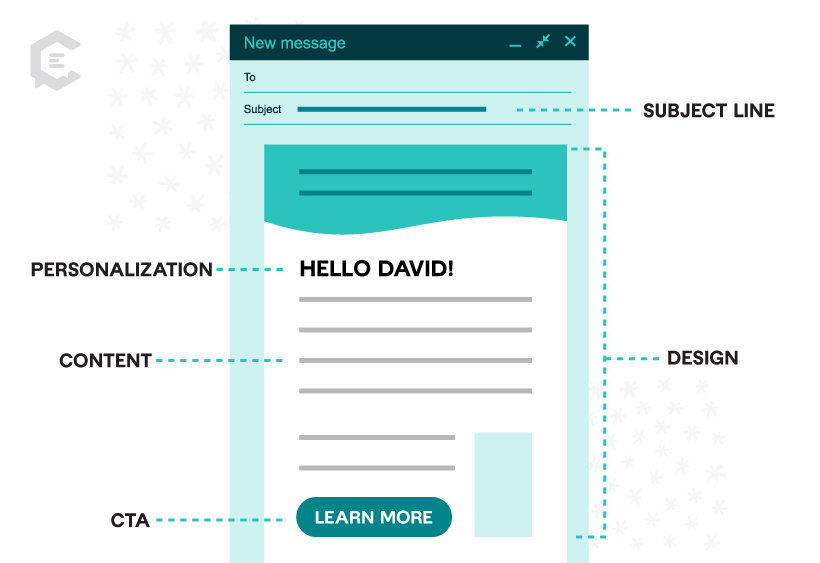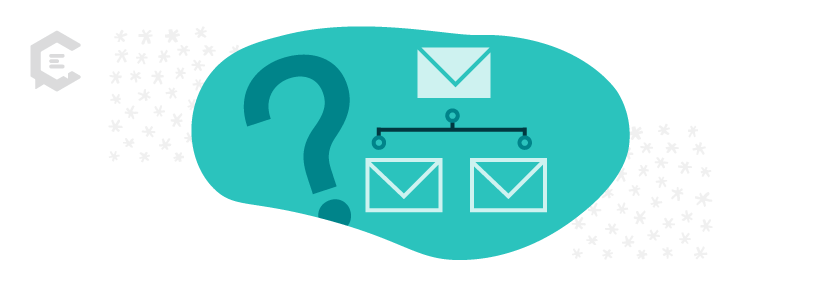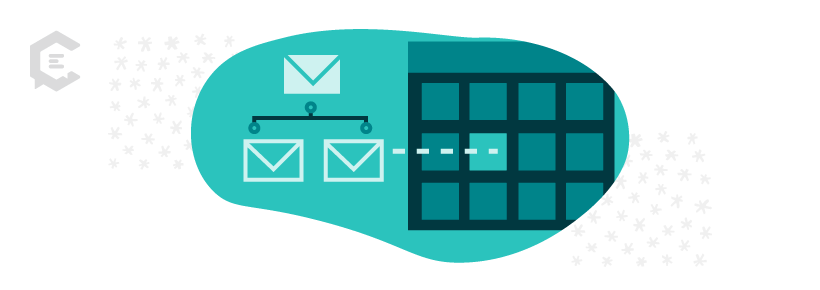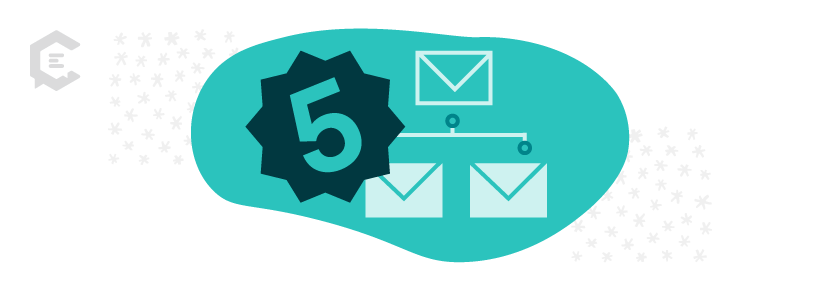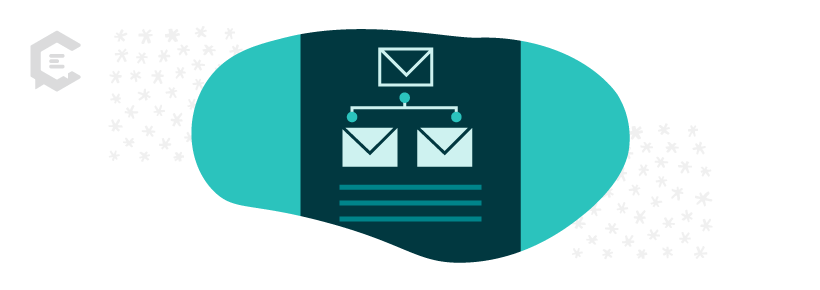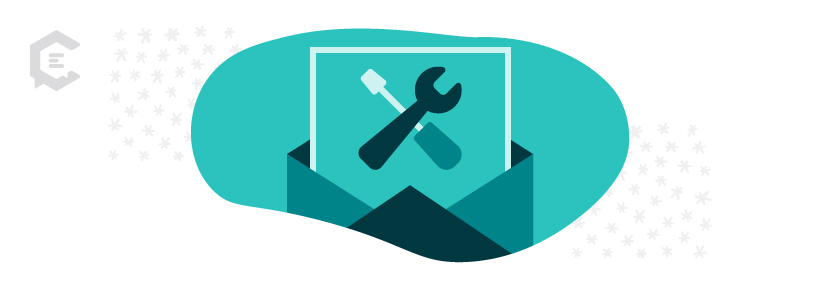Have you ever received an email that seemed so on-target and well-timed that you felt its sender knew you better than the people in your life?
Email marketing isn’t just sending emails. It’s about creating a meaningful connection with your audience.
In this comprehensive guide, we’ll touch on the foundations of email marketing, crafting email sequences, and how they benefit your content strategy. Then, we’ll cover some platforms and tools to enhance your email marketing content creation.
Understanding Email Marketing
Email marketing is one of the most direct and cost-effective ways to communicate with your audience. Its definition is simple. It’s when you send targeted emails to an audience to promote your product or service.
But it doesn’t have to be a hard sell. You can also use emails to establish and nurture a connection with your audience. At the very least, you want to provide value. That value can lead to customer relationships with long-lasting effects that, ultimately, drive conversions for your business.
The foundations of email marketing
The success of your email marketing starts with crafting compelling emails. Here’s a quick breakdown of the foundational elements:
- Subject line: This is where you grab the audience’s attention and entice them to open your email. You want to be concise and intriguing.
- Content: The body of your email should be valuable, engaging, and relevant to your audience so it resonates.
- Design: The best emails are well-structured and visually appealing. And don’t forget to make sure they’re optimized for mobile.
- Personalization: Your emails should be tailored to your audience segment based on their patterns, behaviors, and pain points.
- Call to Action (CTA): Finish with a clear and compelling CTA that guides your audience to a desired action.
Incorporating all of these elements will set you up to create high-quality emails that drive engagement.
The benefits of email marketing
The power of email marketing is that it helps move your customers through the sales funnel without you ever having to reach out personally. It’s ideal for those with a one-size-fits-all product or service with a straightforward sales journey. It ensures those on your mailing list don’t fall through the cracks, get forgotten, or miss buying opportunities.
Email marketing, when done right, increases engagement and keeps your offerings top of mind. For businesses with limited marketing or sales personnel, it can help support (but not replace) the human element of your content marketing.
One of the most powerful ways to use emails is through an email sequence.
What’s an Email Sequence?
An email sequence, or “drip” marketing campaign, is a series of emails with a specific goal and actions that go out to the mailing list automatically. (There must be multiple emails to make it a proper sequence). These are often pre-written and scheduled to be delivered without the marketing team having to hit “send” on every email.
How are email sequences scheduled?
Email sequences are either trigger or time-based.
- Trigger-based: The customer must perform an action for the next email in the series to go out. That could mean clicking a link, signing up for something, or asking a question.
- Time-based: These happen chronologically. The following email is sent after a certain amount of time has passed.
Can you mix both into the sequence? Absolutely.
Most email sequences start as a trigger and then use time-based parameters. A specific user action can change those parameters, however.
For example, imagine a customer in a sequence is supposed to get a follow-up email in 30 days, but they’re showing heightened interest in a service. They’re clicking on links, searching the site, and maybe even putting items in their cart. That warrants interrupting the time-based model with a trigger-based message to act on their interest.
Five types of email sequences
You can use email sequences for any occasion where you want to nudge customers or boost engagement. Here are some of the most common sequences:
Welcome
Best for when someone signs up for your offer, lead magnet, or newsletter and kicks off the relationship. It assumes the person doesn’t know much about you (yet) and seeks to set the tone for the relationship.
Onboarding
Slightly more intimate than the welcome, this assumes you have an ongoing relationship with a new client, student, or employee. It takes them through the process of becoming part of your team or group in a systemized, consistent manner.
Abandon cart
Cart abandonment is real, folks. Studies show that the average shopping cart abandonment rate is nearly 70 percent, meaning 70 percent of shoppers will leave stuff in their cart without finishing the purchase, costing businesses $18 billion annually in lost sales. An email series that reengages this audience can help you boost sales in a big way.
Repeat customer
It’s easy to forget about existing customers in the pursuit of getting new ones. Setting up emails that check in with customers after each purchase and customer support interaction, or on occasions like their birthday, ensures they never feel forgotten. It’s also an incredible way to upsell and cross-sell on past purchases.
Re-engagement
Has it been a while since your customer opened emails? What can you do to reconnect? This type of email sequence acknowledges that the user used to be more engaged and gently nudges them to become an active customer again.
How to write an email sequence
Brands will have very different approaches to the language, design, and CTAs in their emails. With that in mind, here are some best practices for an automated email marketing sequence.
- Set the goal first. Before writing an email, know what you want from a campaign. Do you want more website visits? Fewer abandoned carts? Know the metrics you hope to boost before you begin because everything you do will need to support this.
- Write with the end in mind. Sequence emails are typically short, concise, and have one call to action. Unlike an email newsletter that can highlight many events, promotions, and product updates, you want your drip campaigns to focus on that initial goal. Keep to one message per email, and don’t be shy about what you want to communicate. It’s possible to write incredible CTAs that make people move when you write a clear and concise email.
- Have a way to measure success. Email sequences are made to be revamped, so don’t get too attached to your initial attempt. Analyze the opens, click-through rates, and other metrics to make sure you’re on the right track. Check your sender score to see if you have a good reputation as a quality sender.
- A/B test as needed. We can’t say enough about the merits of A/B testing, and email sequences are a fantastic environment for a controlled test. Just remember to take action on what you learn with each iteration.
The Best Tools and Platforms for Your Email Marketing
Having the right tools in your email marketing can make all the difference. We’ve curated a list of some industry-leading platforms that can get you started while also elevating your email marketing right off the bat.
- Hubspot: Hubspot’s our number one choice. It’s a comprehensive email marketing automation platform. It’s perfect for businesses looking for an all-in-one solution.
- Mailchimp: One of the most widely recognized email marketing platforms. It’s very user-friendly, so Mailchimp might be a great option if you’re just starting. It has robust analytics features and can cover any business size, from startups to large enterprises.
- ActiveCampaign: If you want to focus on email automation, you can’t go wrong with ActiveCampaign. Their platform specializes in automated email sequences with a range of features. This is one to look at if you’re trying to create personalized email campaigns that drive results.
Ready to Elevate Your Email Marketing?
Now that you’ve unlocked the essentials of email marketing, it’s time to start crafting compelling email campaigns that drive your brand’s success.
Remember, email marketing is more than just sending emails. It’s about connecting with your audience by giving them valuable, engaging content.
Whether you’re looking to create one email newsletter or strategize an entire email campaign, our expert teams at ClearVoice have it covered. Discover our solutions or talk to a specialist today.
